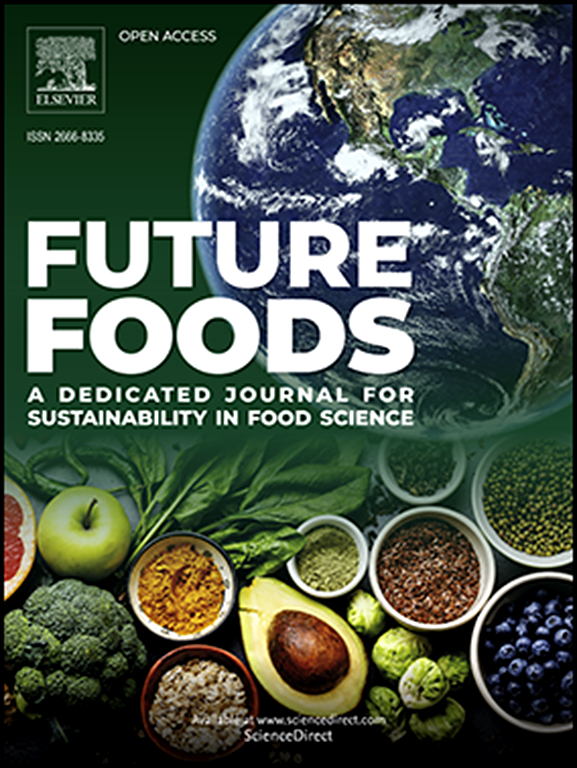Win-win upcycling strategy for red araçá fruit waste: Process intensification and application of food-grade cyanidin-rich antioxidants
IF 7.2
Q1 FOOD SCIENCE & TECHNOLOGY
引用次数: 0
Abstract
The valorization of non-marketable red araçá fruit represents a crucial step toward achieving circular economy goals, tackling agrifood waste while advancing sustainable practices. Large amounts of these fruits are discarded due to not meeting commercial standards, resulting in significant environmental and economic losses. However, these discarded fruits hold untapped biological potential, particularly for the food industry. This study optimized microwave-assisted extraction (MAE) to recover cyanidin-rich pigments from red araçá. The MAE method demonstrated high efficiency, yielding extracts with concentrations ranging from 3.5 mg/mL to 4 mg/mL under optimal conditions (300 W for 120 s). The pigments exhibited a significant 100% radical scavenging activity in DPPH assays and maintained color stability for 18 days when incorporated into natural yogurt. Sensory evaluations revealed strong consumer acceptance, with participants favoring formulations with 0.35 µgcyanidin/gyogurt. These results underscore the potential of cyanidin-rich pigments to enhance food quality and stability, showcasing their role in advancing sustainable resource utilization within the food industry. In fact, this research highlights the importance of red araçá valorization as a sustainable resource, driving a circular economy through innovative extraction processes and their practical applications in the food industry.
求助全文
约1分钟内获得全文
求助全文
来源期刊

Future Foods
Agricultural and Biological Sciences-Food Science
CiteScore
8.60
自引率
0.00%
发文量
97
审稿时长
15 weeks
期刊介绍:
Future Foods is a specialized journal that is dedicated to tackling the challenges posed by climate change and the need for sustainability in the realm of food production. The journal recognizes the imperative to transform current food manufacturing and consumption practices to meet the dietary needs of a burgeoning global population while simultaneously curbing environmental degradation.
The mission of Future Foods is to disseminate research that aligns with the goal of fostering the development of innovative technologies and alternative food sources to establish more sustainable food systems. The journal is committed to publishing high-quality, peer-reviewed articles that contribute to the advancement of sustainable food practices.
Abstracting and indexing:
Scopus
Directory of Open Access Journals (DOAJ)
Emerging Sources Citation Index (ESCI)
SCImago Journal Rank (SJR)
SNIP
 求助内容:
求助内容: 应助结果提醒方式:
应助结果提醒方式:


